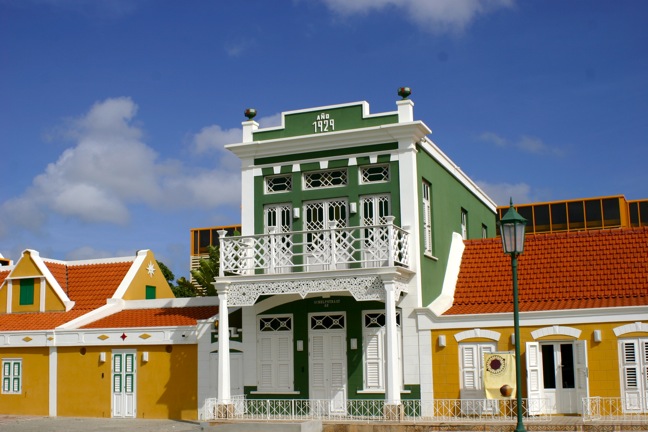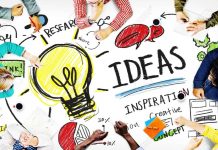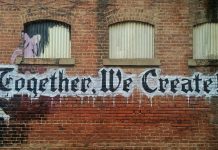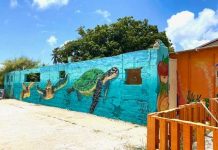Throughout the entire discussion of national cultural heritage, museums and historical cultural institutions are considered imperative pillars for the preservation of tangible and intangible heritage. In previous columns the focus was mainly on describing the essence of these concepts and what they could contribute to the dialogue in the Aruban local cultural context.
Fortunately, yesterday on November 5th 2019, after being closed for more than two years, the ‘Museo Arceologico Nacional Aruba’ (MANA) was reopened to the public. The MANA was initially opened on July 26th 2019 and has since then paved the way for other museum developments on the island. With the use of the Tourism Product Enhancement Fund (TPEF) the Government of Aruba was able to invest in the resources needed to reopen the permanent exposition of the MANA to the Aruban community.
Besides the MANA, Aruba has several other museums such as; the Industry Museum, the San Nicolas Community Museum, the Aloe Museum, the History Museum, the Carnival Exhibition and so on. “Museums can play a leading role in bolstering the creative economy locally and regionally. Museums are also increasingly present in the social sphere, acting as platforms for debate and discussion, tackling complex societal issues and encouraging public participation” (UNESCO, 2019). Continuing the vision of the Aruban government, working towards a human-centered approach, the aim should be on fostering sustainable cultural development in the Aruban society. Museums don’t only influence the fostering and strengthening cultural system, but serve as a pillar in sectors such as education and tourism.
Museums and Education.
With no doubt we can conclude that education is a critical asset for sustainable development. Education that is not representative of the cultures of the people in a society is empty and incompetent. One of the primary objectives of any museum is to educate the public, and it is only the museum that has the capacity and the ability to impart cultural education effectively as it encompasses the necessary resources for doing so in its collections. Most museums possess diverse materials and information that can and therefore should be used in enriching and improving the school curriculum throughout various disciplines and levels. The focus should be on inclusivity in educational policy making and project management. Educational planners should consider working closely with museum professionals on how the available educational resources in the museum can be integrated into the curriculum and the learning process at all levels. The goal for museums should be to use their collections in promoting a better understanding of the collective Aruban heritage, which will have the effect of fostering the commonality of those things that unite the nation and its people. As education becomes a global issue as the century evolves, it should be clearly understood that the museum is a veritable institution in the learning process that should be fully integrated into the educational system. This push can also encourage museums to innovate and provide a learning experience that fits the needs of students in the 21st century.
Museum and Tourism.
Besides local development, on a broader perspective, museums can promote cultural diplomacy that will engender greater understanding between people and other nations. “Along with the dramatic rise in cultural tourism in recent decades, the number of museums around the world has increased from 22,000 in 1975 to 55,000 today” (UNESCO, 2019). Cultural tourism is therefore also significant in this discussion. Tourism that is concentrated on “a country culture, overtly the lifestyle of the people in those geographical areas, the history of those people, their art, architecture, religion, and other elements that helped shape their way of life” (UNESCO, 2018). Developing countries, such as Aruba “need support from international community in safeguarding their precious heritage. Cultural heritage tourism is one of the best parts of the tourism industry, and is a more powerful economic development tool. It has been revealed that museums are now playing a major role not only in the wider sphere of arts, but also within tourism and leisure. Museums cannot no longer sit back and expect that people will start queuing up. Their roles have changed to attract more audiences” (Perera, 2013) besides the local society.
Moving Forward.
While we celebrate the inauguration of the MANA to the Aruban public and international visitors, the role of adequate cultural policy and management should not be taken lightly. “UNESCO supports developing countries using museums’ potential to foster social cohesion, notably among local communities and disadvantaged groups” (UNESCO, 2019). Aruba in her effort should in a concrete way establish an inclusive cultural roadmap, which identifies a central cultural vision, a practical overview of contributions from all relevant stakeholders, a national resource inventory to secure the sustainability and effectiveness in the long run. We have a diverse set of puzzles on the table. Now, the time has come to make something impactful for the future. q











